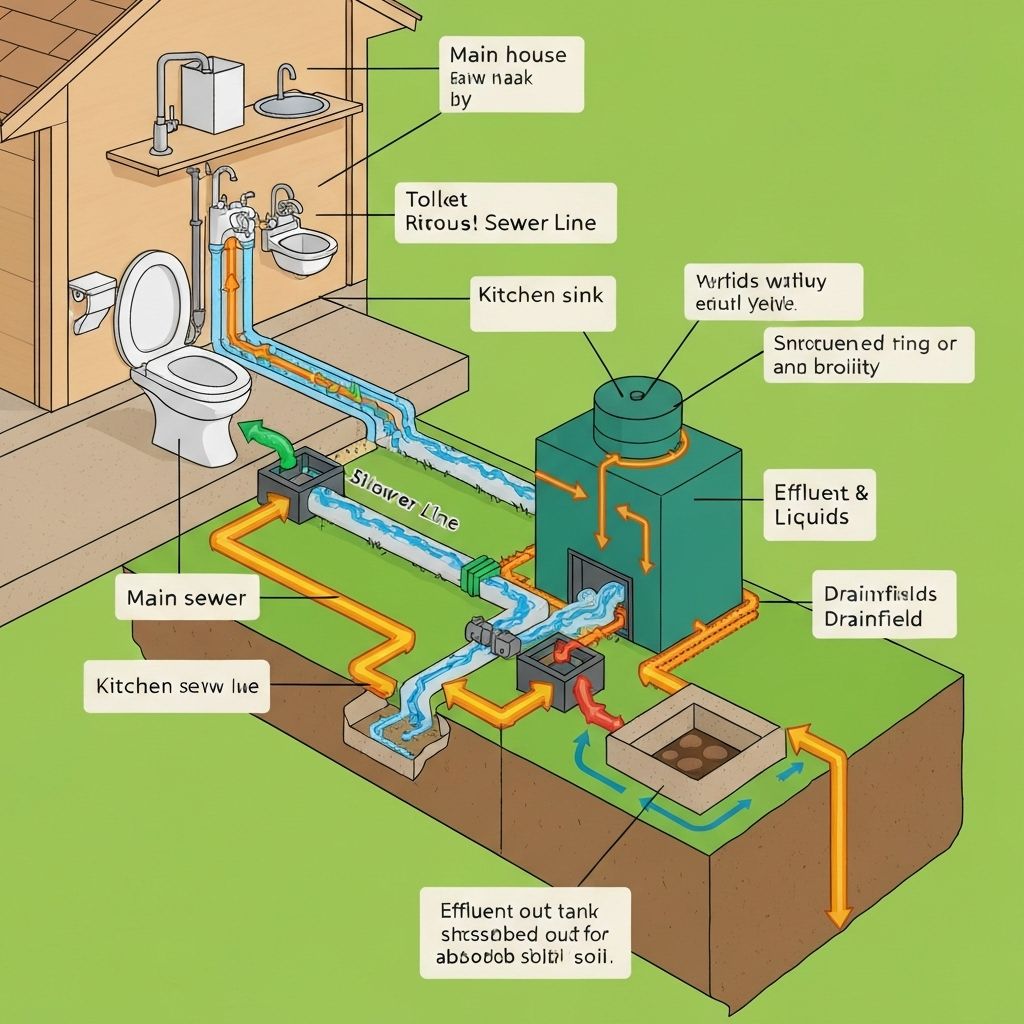Understanding how your septic system works can help you maintain it properly and identify potential problems early. Let's explore the key components and their functions.
The Septic Tank
The septic tank is the heart of your system. This large, watertight container (typically 750-1,500 gallons) receives all wastewater from your home. Inside the tank, solids settle to the bottom forming sludge, while oils and grease float to the top as scum. The middle layer contains partially clarified water.
Tank Materials
Modern septic tanks are made from:
- Concrete: Durable and long-lasting, but can crack over time
- Fiberglass: Lightweight and resistant to corrosion
- Plastic: Affordable and easy to install, but may be less durable
The Distribution Box
After leaving the septic tank, partially treated wastewater flows to the distribution box (D-box). This small concrete or plastic box evenly distributes effluent to the drain field pipes, ensuring uniform wastewater distribution across the entire drain field.
The Drain Field (Leach Field)
The drain field is where final treatment occurs. It consists of a network of perforated pipes buried in gravel beds. As effluent flows through these pipes, it's filtered and purified by soil bacteria before reaching groundwater.
Soil Requirements
Proper soil conditions are crucial:
- Good drainage but not too fast
- Adequate depth to groundwater
- Proper soil composition (not too clay-heavy or sandy)
Baffles and Filters
Inlet and outlet baffles in the septic tank prevent scum and solids from entering or leaving the tank. Some systems also include effluent filters that provide additional protection for the drain field.
Advanced Treatment Systems
Some properties require advanced treatment systems:
Aerobic Treatment Units (ATUs)
These systems add oxygen to accelerate bacterial breakdown of waste. They're often required in areas with poor soil conditions or environmental sensitivity.
Sand Filters
Used when soil conditions aren't suitable for conventional drain fields. Wastewater is filtered through specially designed sand beds.
Mound Systems
Built above ground when soil depth or drainage is inadequate. These systems pump effluent to an elevated sand mound for treatment.
How It All Works Together
The process follows these steps:
- Wastewater enters the septic tank
- Solids settle and are broken down by bacteria
- Partially treated water flows to the distribution box
- Effluent is distributed to drain field pipes
- Soil filters and purifies the wastewater
- Clean water enters groundwater
Maintenance Implications
Understanding these components helps you:
- Recognize when problems occur
- Understand why regular pumping is necessary
- Protect your drain field from damage
- Make informed decisions about repairs
Regular professional inspections can identify component issues before they become major problems. True Flow Septic's experienced technicians can assess all system components and recommend appropriate maintenance or repairs.
Found this helpful?
Share this article with others who might benefit.

